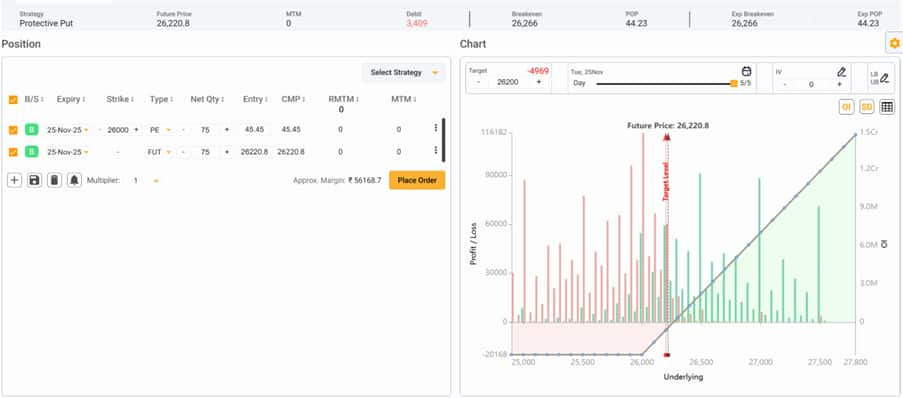Use structured ‘Option Trading’ for steady returns; here are 3 factors to keep in mind
Options trading is more and more becoming an integral part of trading especially after benchmark indices topped global charts for highest Options Volumes.
SHUBHAM AGARWAL | 08-Feb-20
Reading Time: 3 minutes

Options trading is more and more becoming an integral part of trading especially after benchmark indices topped global charts for highest Options Volumes. Now, that we understand the basics of options, it is quintessential to get into the next step of structuring ‘Options Trading’.
Over a decade of errors have taught me few rules that need to be applied to Options Trading so that the experience never turns sour.
In my experience, lack of any of the following few things is capable to repel one out of Options Trading.
#1 Trading Options with Terminal Pay-Off Vs Intra-Expiry Pay-Offs
This point is really important for all the budding option traders as nowadays what attracts traders to come into the options trading is ‘Option Writing’.
Remember, whenever we do, naked option writing i.e. writing a Call without an intention to sell the stock or writing a Put without an intention to buy the stock. It is necessary to decide on a risk containment mechanism.
All the net option selling strategies including distant writing of a higher Call and Lower Put comes with an unaccountable loss profile, hence, an exit plan is necessary to be structured at the time the trade is contemplated.
Secondly, even for known loss strategies like a simple Option Buy (and believe me this puts off many new option traders), be very clear in mind are we ready to put all the premium money at stake, if yes if the expected reward justifying the premium money paid.
If not, it is better to use stop losses in known-loss strategies as well using intra-expiry pay-off calculations.
#2 Diversification of Options Portfolio
The benefits of diversification are curtailing risk associated with a single style/stock deployment by adding more style/stock. When it comes to Options trading one clearly needs to define a structure in terms of how much money are we deploying and where.
Single strategy plan of either Selling Options on a daily basis or doing intraday buy options. Some of these strategies have a predefined model input for defining the entry or exit of an options trade that never lasts long.
Dynamic market conditions and ever-evolving markets will never let a single strategy game plan succeed. Hence, a structure is necessary where there is a diversification especially on two broad parameters i.e. ‘Directional’ and ‘Non-Directional’.
Take your pick for directional trading Single Options/Spreads/ Ratios, whatever that suits your profile but also have any one of the non-directional strategies to combine it with.
So, in periods of lull like the 3 months pre-Union Budget when the market just wasn’t in a mood to move around, we still have a steady flow of returns
#3 Fund Allocation to different kind of Strategies
This is just an extension of the diversification but a structure also needs to be defined in an around the size of deployment in terms of commitment of funds. Fund deployment should be negatively co-related to risk profile.
Meaning, trading single options is a high-risk game so the fund commitment should be relatively lower. While within direction trading a Bull Spread/Bear Spread has limited risk as an element of time decay is taken care of, hence here we can allocate more funds.
These empirically learned lessons are primarily aimed at bringing relatively higher consistency in returns.
(The author is CEO & Head of Research at Quantsapp Private Limited.)
Learn and read more about Ratio spreads from Quantsapp classroom which has been curated for understanding of Long Straddle from scratch, to enable option traders grasp the concepts practically and apply them in a data-driven trading approach.
Recent Articles

Beyond Panic: Take control when your derivatives trade turns red, says Shubham Agarwal!
13-Dec-25

Evolve Your Trade: The missing step in most trading systems: Shubham Agarwal
06-Dec-25

Best trending option trading strategies: Shubham Agarwal
29-Nov-25

3 best ways to hedge using Options: Shubham Agarwal!
22-Nov-25

When in doubt to write, do Iron Fly: Shubham Agarwal!
15-Nov-25

Identify potential turning points with advance-decline: Shubham Agarwal
08-Nov-25

Slow and spreads more efficient: Shubham Agarwal
01-Nov-25

Use implied volatility as probable top finder: Shubham Agarwal
25-Oct-25

SHUBHAM AGARWAL is a CEO & Head of Research at Quantsapp Pvt. Ltd. He has been into many major kinds of market research and has been a programmer himself in Tens of programming languages. Earlier to the current position, Shubham has served for Motilal Oswal as Head of Quantitative, Technical & Derivatives Research and as a Technical Analyst at JM Financial.
Recent Articles

Beyond Panic: Take control when your derivatives trade turns red, says Shubham Agarwal!
13-Dec-25 09:12:00

Evolve Your Trade: The missing step in most trading systems: Shubham Agarwal
06-Dec-25 20:43:00

Best trending option trading strategies: Shubham Agarwal
29-Nov-25 09:32:00

3 best ways to hedge using Options: Shubham Agarwal!
22-Nov-25 09:11:00

When in doubt to write, do Iron Fly: Shubham Agarwal!
15-Nov-25 10:48:00

Identify potential turning points with advance-decline: Shubham Agarwal
08-Nov-25 10:35:00

Slow and spreads more efficient: Shubham Agarwal
01-Nov-25 10:35:00











